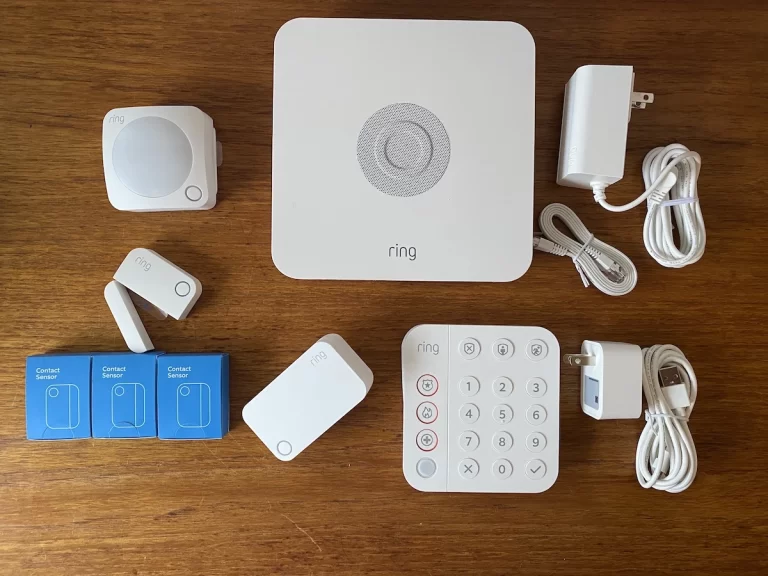What Are the Two Types of CCTV Systems? Analog and IP Cameras
What are the two types of CCTV systems? In this article, we will explore the two main types of CCTV systems: analog and IP cameras. Exploring features, benefits, and applications to give you a comprehensive understanding of CCTV technology.

What is CCTV?
Closed Circuit Television (CCTV) refers to a system of cameras and other related devices that capture and transmit video signals to a specific set of monitors or recording devices.
Unlike broadcast television, CCTV systems are designed for private use and are not publicly transmitted. They are commonly used for security and surveillance purposes in various settings.
What Are the Two Types of CCTV Systems?
CCTV camera systems can be grouped into two main types namely; Analog and IP cameras. Let’s discuss more details:
1. Analog CCTV System
Analog CCTV systems have been the traditional choice for surveillance applications. They utilize analog cameras and analog signals to transmit video footage.
Here’s a detailed overview of the features and benefits of analog CCTV systems:
I. Resolution: Analog cameras typically offer lower resolution compared to IP cameras. However, advancements in technology have led to the development of high-resolution analog cameras, such as HD-TVI and HD-CVI.
II. Cost-Effective: Analog systems are generally more affordable compared to IP systems, making them a popular choice for budget-conscious users.
III. Compatibility: Analog cameras are often compatible with existing infrastructure, making it easier to upgrade or expand an existing analog system.
IV. Wired Connection: Analog cameras require physical cables to transmit video signals, limiting the flexibility of installation options.
V. Limited Remote Accessibility: Analog systems generally offer limited remote viewing capabilities and require additional hardware for network connectivity.
2. IP CCTV System
IP (Internet Protocol) CCTV systems are becoming increasingly popular due to their advanced features and flexibility.
These systems use network cameras to capture and transmit video data over an IP network. Let’s explore the key features and benefits of IP CCTV systems:
I. High Resolution: IP cameras provide higher resolution options, including megapixels and even 4K resolutions, delivering superior image quality.
II. Network Connectivity: IP cameras connect directly to the network, allowing for seamless integration with other IP-based systems and devices.
III. Scalability: IP systems can easily accommodate additional cameras and expand to cover larger areas without significant infrastructure changes.
IV. Remote Access and Management: IP systems offer robust remote viewing and management capabilities, allowing users to monitor and control cameras from anywhere with an internet connection.
V. Advanced Analytics: IP cameras often include built-in analytics capabilities, such as motion detection, facial recognition, and object tracking, providing enhanced security and operational insights.
Analog vs. IP: Choosing the Right CCTV System

When selecting a CCTV system, it’s essential to consider your specific requirements and budget. Here are some factors to consider when deciding between analog and IP cameras:
I. Image Quality: If high-resolution footage is crucial for your surveillance needs, IP cameras offer superior image quality.
II. Budget: If cost is a significant consideration, analog cameras provide a more affordable option for smaller budgets.
III. Scalability: If you anticipate expanding your surveillance system in the future, IP cameras offer more scalability and flexibility.
IV. Remote Monitoring: If remote access and management are important to you, IP cameras provide extensive remote capabilities.
V. Existing Infrastructure: If you have an existing analog system, upgrading to analog HD cameras may be a more cost-effective choice than transitioning to IP cameras.
It’s worth consulting with a professional security provider to assess your specific requirements and recommend the most suitable CCTV system for your needs.
Conclusion
Understanding the two types of CCTV systems, analog and IP, is essential for anyone involved in implementing surveillance and security measures.
Analog systems offer cost-effective solutions with compatibility advantages, while IP systems provide high resolution, scalability, and advanced features.
By considering your specific requirements and consulting with experts, you can choose the CCTV system that best fits your needs.
Stay informed about the latest advancements in CCTV technology to ensure your security measures are up to date.





